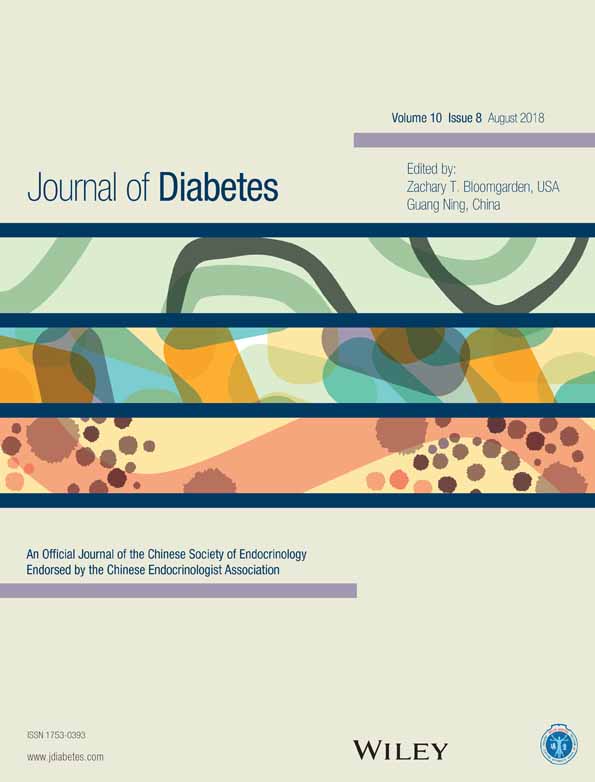Utility of three novel insulin resistance-related lipid indices for predicting type 2 diabetes mellitus among people with normal fasting glucose in rural China
在空腹血糖正常的中国农村人群中使用3种新的胰岛素抵抗相关血脂指标来预测2型糖尿病
Abstract
enBackground
Inexpensive and easily measured indices are needed for the early prediction of type 2 diabetes mellitus (T2DM) in rural areas of China. The aim of this study was to compare triglyceride glucose (TyG), visceral adiposity (VAI), and lipid accumulation product (LAP) with traditional individual measures and their ratios for predicting T2DM.
Methods
Data for 11 113 people with baseline normal fasting glucose in a rural Chinese cohort were followed for a median of 6.0 years. Cox proportional hazards regression was used to calculate covariate-adjusted hazard ratios (aHRs) and 95% confidence intervals (95% CIs) and receiver operating characteristic analysis was used to compare the ability of traditional measures and TyG, VAI, and LAP at baseline to predict T2DM at follow-up.
Results
Among individual measures, fasting plasma glucose (FPG) and waist circumference (WC) were strongly associated with T2DM. Of all lipid ratios, an elevated triglycerides (TG) to high-density lipoprotein cholesterol (HDL-C) ratio was associated the most with T2DM. Compared with the first quartiles of TyG, VAI, and LAP, their fourth quartiles were associated with T2DM for men (aHR 3.54 [95% CI 2.08–6.03], 2.89 [1.72–4.87], and 5.02 [2.85–8.85], respectively) and women (6.15 [3.48–10.85], 4.40 [2.61–7.42], and 6.49 [3.48–12.12], respectively). For predicting T2DM risk, TyG, VAI, and LAP were mostly superior to the TG: HDL-C ratio, but did not differ from FPG and WC.
Conclusions
Prediction of T2DM was not improved by TyG, VAI, and LAP versus FPG or WC alone. Therefore, TyG, VAI, and LAP may not be inexpensive tools for predicting T2DM in rural Chinese people.
摘要
zh背景
为了在中国农村地区早期预测2型糖尿病(T2DM), 我们需要使用廉价且容易测量的指标。本研究旨在比较甘油三酯葡萄糖(riglyceride glucose, TyG)、内脏脂肪(visceral adiposity, VAI)、脂质蓄积产物(lipid accumulation product, LAP)和传统个体测量指标以及它们的比值预测T2DM的价值。
方法
对11113名基线时空腹血糖正常的中国农村地区受试者进行了中位数为6年的随访。使用Cox比例风险回归法, 计算校正协变量后的风险比(adjusted hazard ratios, aHRs)与95%置信区间(95% CIs);使用受试者操作特性分析法, 比较基线时传统测量指标和TyG、VAI、LAP对于随访时发生T2DM的预测能力。
结果
在个体测量指标中, 空腹血糖(plasma glucose, FPG)以及腰围(waist circumference, WC)与T2DM强烈相关。在所有的血脂比值中, 甘油三酯(triglycerides, TG)与高密度脂蛋白胆固醇(high-density lipoprotein cholesterol, HDL-C)比值升高与T2DM之间的相关性最高。与TyG、VAI以及LAP的第一个四分位数相比, 它们的第四个四分位数与男性(aHR分别为3.54[95% CI为2.08-6.03]、2.89[1.72-4.87]、5.02 [2.85-8.85])以及女性(分别为6.15[3.48-10.85]、4.40[2.61-7.42]、6.49[3.48-12.12])发生T2DM之间都具有相关性。TyG、VAI以及LAP对于T2DM风险的预测能力明显优于TG与HDL-C的比值, 但是与FPG以及WC没有差异。
结论
与单独的FPG或WC相比, TyG、VAI以及LAP并没有提高预测T2DM的能力。因此, 在中国农村人群中TyG、VAI以及LAP可能并不是廉价的可用于预测T2DM的指标。




